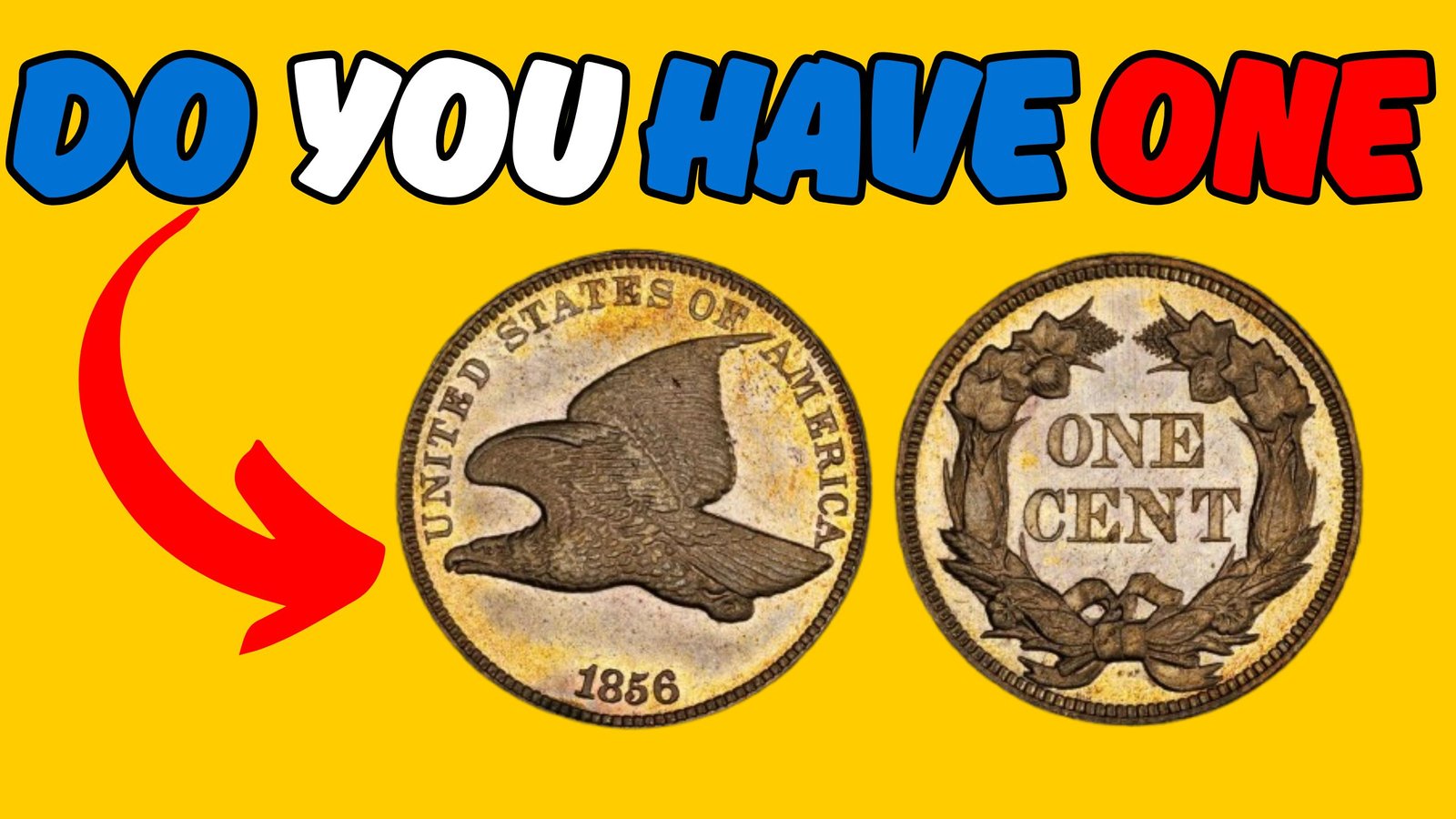Fascinating Flying Eagle Pennies 1856 -1858 : Small in size but rich in history, the Flying Eagle cent is one of the most intriguing and short-lived coins ever produced by the U.S. Mint. Minted only between 1856 and 1858, these copper-nickel pennies have become prized collectibles, beloved for both their rarity and their revolutionary role in American coinage.
The Birth of a New Cent
Before the Flying Eagle cent, Americans used the large cent — a coin nearly the size of a modern half dollar. These were made of pure copper and had grown increasingly unpopular due to their bulk and the rising cost of copper.
In 1856, under pressure to reduce minting costs and modernize coinage, the U.S. Mint experimented with a new, smaller one-cent piece made of a copper-nickel alloy. This prototype featured a bold new design: an eagle in flight on the obverse and a wreath surrounding “ONE CENT” on the reverse.
The Flying Eagle cent was born.
The Three Years of Production
- 1856 – Technically a pattern coin (a prototype for testing), the 1856 Flying Eagle cent was not meant for general circulation. However, around 1,500 to 2,000 were struck and distributed to Congress and VIPs to gain support for the new design. These have since become incredibly rare and valuable, often selling for $10,000–$25,000 or more, depending on condition.
- 1857 – This was the first year of official circulation. The U.S. Mint produced over 17 million coins, making 1857 the most accessible date for collectors. It marked the public’s first widespread use of the smaller, modern-size cent.
- 1858 – Production continued, with some design tweaks. In 1858, the U.S. Mint issued two minor varieties:
- Small Letters
- Large Letters
Collectors distinguish the two based on the spacing and size of the “AME” in “AMERICA” on the obverse.
Design and Legacy
The Flying Eagle cent was designed by James B. Longacre, the Chief Engraver of the U.S. Mint. The obverse eagle was inspired by an earlier Gobrecht dollar design. Though aesthetically admired, the Flying Eagle design posed production problems — it didn’t strike well on the harder copper-nickel alloy, leading to many weak or uneven coins.
Because of these minting difficulties, the Flying Eagle cent was replaced in 1859 by the Indian Head cent, which proved more durable and remained in use for the next 50 years.
Why Collect Flying Eagle Pennies?
Collectors love the Flying Eagle cent for several reasons:
- Short series: With just three years and a few varieties, it’s one of the easiest early sets to complete.
- Historical significance: It represents the shift to modern small cents.
- Investment potential: High-grade and rare varieties, especially the 1856, have strong auction value.
- Appealing design: The dynamic flying eagle stands out among U.S. coinage.
How Much Are They Worth Today?
- 1856: $10,000 to over $25,000, depending on grade.
- 1857–1858: $30 to $500 in circulated condition; uncirculated examples can fetch $1,000+.
Varieties like the 1858 Large Letters in Mint State can command a premium.
Tips for Collectors
- Buy graded coins: Authenticity is key — many counterfeits of the 1856 exist.
- Check strike quality: Flying Eagles often suffer from weak strikes, so a well-struck example is more desirable.
- Look for varieties: Small vs. Large Letters in 1858 offer added collecting interest.
Final Thoughts
Though minted for just three short years, the Flying Eagle cent left a lasting mark on U.S. coinage history. With its historic transition, artistic flair, and collectibility, it continues to captivate new generations of collectors.
Whether you’re a seasoned numismatist or just starting your journey into coin collecting, the Flying Eagle penny is a must-have for any serious U.S. coin collection.
Next up: Learn how to distinguish the Flying Eagle Small Letters vs. Large Letters — and why it matters to your collection.
Frequently Asked Questions (FAQs.)
Q1: What is a Flying Eagle cent?
A: The Flying Eagle cent is a one-cent coin issued by the U.S. Mint from 1856 to 1858. It was the first small-size cent and features a flying eagle on the obverse and a wreath on the reverse.
Q2: Why were Flying Eagle pennies created?
A: They were introduced to replace the bulky and expensive large copper cents. The Flying Eagle was made from a copper-nickel alloy and was smaller, more convenient, and cheaper to produce.
Q3: What makes the 1856 Flying Eagle cent so valuable?
A: The 1856 issue was a pattern coin produced in limited numbers (estimated 1,500–2,000) and distributed mainly to Congress and dignitaries. Because of its rarity, it is considered a key date and can be worth $10,000 or more in collectible condition.
Q4: What’s the difference between the 1858 Small Letters and Large Letters varieties?
A: The difference is in the font size and spacing of the word “AMERICA” on the obverse. In the Small Letters variety, the letters are thinner and further apart; in the Large Letters variety, they are thicker and more closely spaced. Collectors value both, but the Large Letters version is typically rarer and more desirable.




